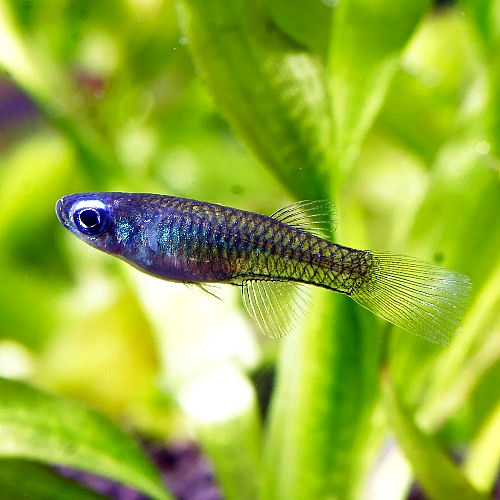🌿 Farlowella Twig Catfish (Farlowella vittata)
🌿 Farlowella Twig Catfish (Farlowella vittata)
Algae Grazer • Camouflaged Catfish • Peaceful Community Cleaner
📋 The Farlowella Twig Catfish (Farlowella vittata) is one of the most unusual freshwater fish available. Its long, slender body and stick-like appearance provide natural camouflage, making it resemble a twig or piece of driftwood. This adaptation helps it avoid predators and makes it a conversation starter in aquariums.
Farlowella are peaceful algae grazers, clinging to glass, plants, and driftwood with their sucker-mouths. While excellent at eating biofilm and soft algae, they require supplemental feeding with algae wafers and vegetables to thrive. They are sensitive to poor water quality, so stable, clean, and well-oxygenated aquariums are essential.
Their gentle temperament and unique appearance make them a favorite among aquarists, though they are better suited for dedicated keepers who can meet their specialized care needs.
💡 Highlights
✨ Twig-like appearance – expert camouflage in aquariums
⚪ Algae grazer – natural cleaner of glass and surfaces
📏 Reaches 15 – 20 cm – slender medium-sized catfish
✅ Peaceful community fish – safe with small tankmates
🐠 Male egg guardians – fascinating breeding behavior
🧾 A Quick Look at the Farlowella Twig Catfish
📛 Common Name: Twig Catfish / Farlowella Catfish
🔬 Scientific Name: Farlowella vittata (Farlowella spp.)
👨👩👧 Family: Loricariidae
🌍 Origin: South America (Colombia, Venezuela, Peru, Brazil)
📏 Max Size: 15 – 20 cm (≈ 6 – 8")
💧 pH Range: 6.0 – 7.5
🌡️ Temperature Range: 23 – 27 °C (73 – 81 °F)
🧠 Care Level: Intermediate (sensitive to water quality)
💖 Temperament: Peaceful
🏠 Min Tank Size: 110 L (30 US gallons)
📌 Tank Level: Bottom and surfaces (glass, driftwood, leaves)
🧬 Captive Bred: ❌ No
🌿 Wild Caught: ✅ Yes
⏳ Lifespan: 8 – 10 years
🍽️ Diet: Herbivore/omnivore (algae, biofilm, veggies, sinking wafers)
🐣 Reproduction: Egg-layer; males guard eggs on surfaces

















